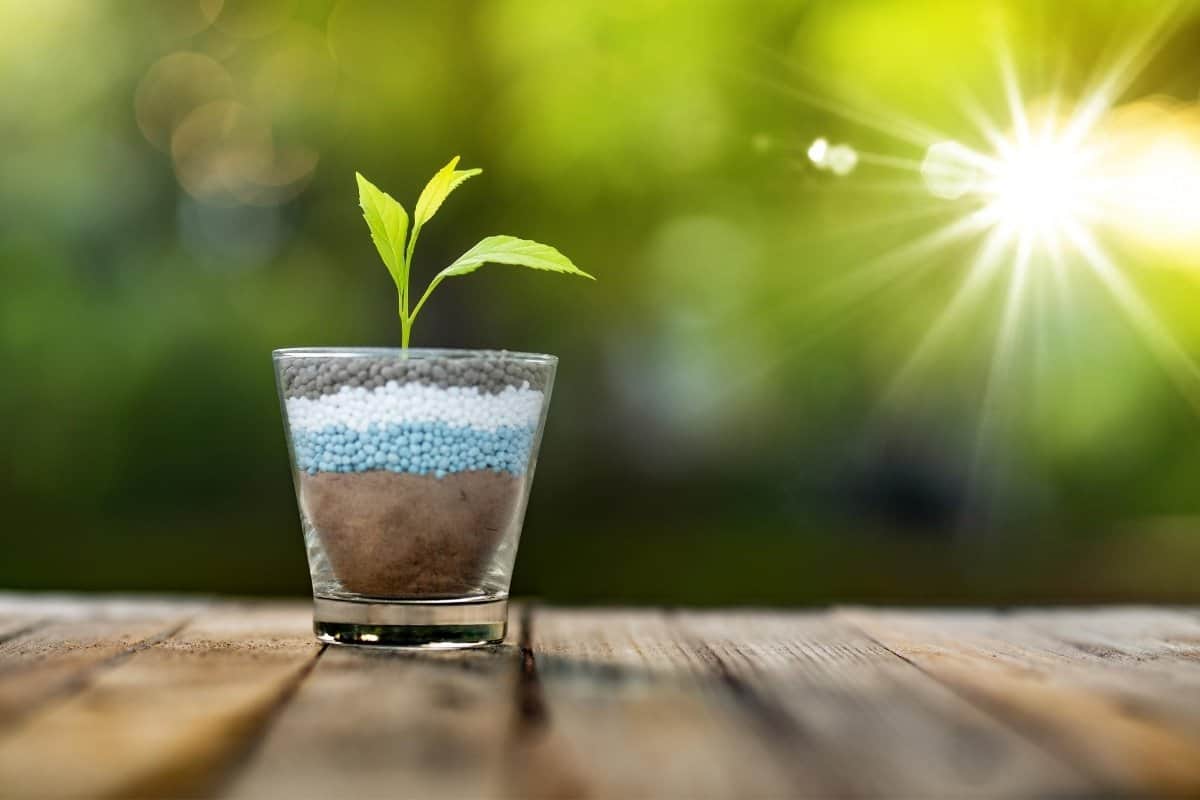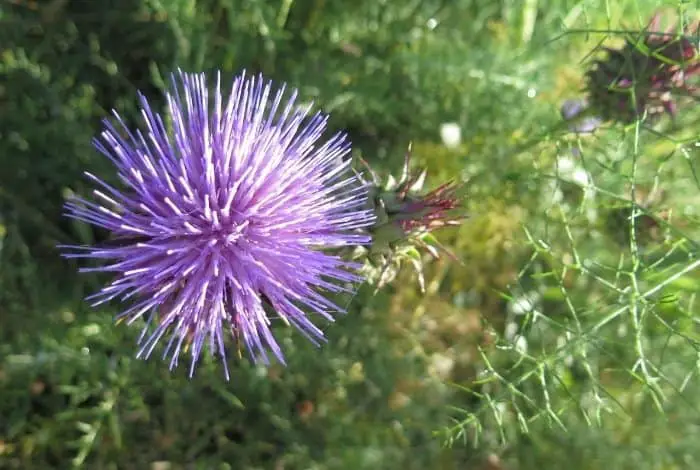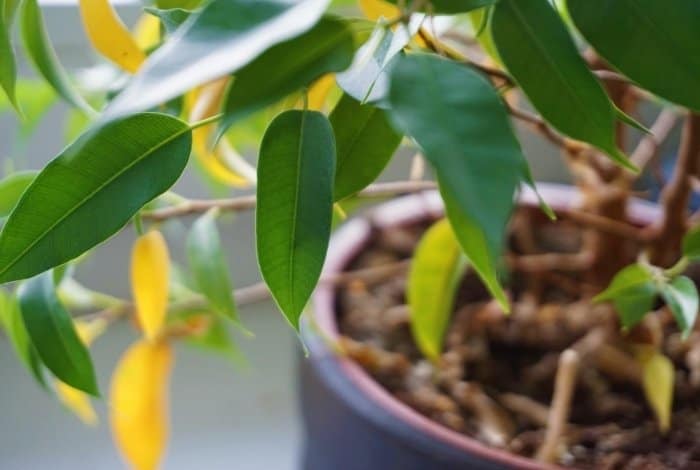Last Updated on January 6, 2022 by
What does phosphorus do for plants? Phosphorus is a vital mineral for the growth of plants. It is majorly essential for blooming flower and root growth. Phosphorus is one of the components in the NPK (Nitrogen, Phosphorus, and Potassium) general fertilizer.
Even though phosphorus cannot be found in the atmosphere, it is still a vital ingredient for plant growth.
What Phosphorus Do for Plants – The Benefits
Phosphorus does a lot for plants. We have highlighted some effects of phosphorus on plants:
- Phosphorus promotes the growth of the root system.
- Phosphorus also helps convey energy throughout the plant system.
- It helps establish new plant growth.
- For the production of DNA, phosphorus plays a key element to the DNA (genetic material) in plants. It also makes up the cell membrane.
- It is also a vital component of RNA. RNA is the molecule that translates DNA genetic code to manufacture the proteins component essential for plant structure and genetic transfer.
- It binds the structure of DNA and RNA links (Phosphorus bond).
- One of the essential elements of Adenosine triphosphate (the energy house of a plant) is phosphorus.
- Phosphorus enhances nitrogen-fixing ability in legumes.
- If you want good development all through your plant life cycle, phosphorus is needed.
Read more about Best Fertilizer for Cactus and Succulents
Deficiency of Phosphorus in Plants
The deficiency of phosphorus is not so easy to determine or quick to notice. Unlike nutrients deficiency such as nitrogen, you get clear evident yellowing of leaves. Some other nutrients deficiency can be curved leaves. But for phosphorus, you will need to be very vigilant and take a closer look at the symptoms. It might be too late to correct by the time you notice an obvious deficiency in annual plants.
Symptoms of Phosphorus Deficiency in Plants
You can use the following ways to determine deficiency of phosphorus:
- Examine your flowers: take a closer look at your plant flowers and see if they are producing good blooms or just little flowers. If the flowers are too small, your plant might have phosphorus deficiency.
- Low fruit production: because there is low flower bloom, fruits, and seeds yield will decrease.
- Plant growth: if you notice stunted plant growth or abnormal in plant maturity. Or if the stem of your plant is weak and thin, it might be a sign of phosphorus deficiency.
- Root system: if your plant root system is weak, your plant might be suffering from phosphorus deficiency.
- Discoloration: a few plants such as corns are likely to display abnormal discoloration when there is a deficiency of phosphorus.
How To Increase Phosphorus in Soil
The treatment and correction of lack of phosphorus in plants are to simply increase the amount of phosphorus in the soil.
You can apply phosphorus in the form of livestock manure to the soil. You can also apply synthetic fertilizers to your soil.
Burpee Organic Bone Meal Fertilizer
Final Note
The importance of phosphorus in plant development cannot be overemphasized. Without an adequate supply of phosphorus, plants cannot grow the right way it should. Therefore, give your plant the best start-up and continuous life-cycle boost and watch your plant grow in superabundance
FAQs
Does phosphorus promote flowering?
Phosphorus does not promote flowering in most plants. It is available in different forms and is the most widely spread element on earth.
What plants benefit from phosphorus?
Phosphorus is a chemical compound that is essential for the growth of plants. It is also important for marine life because it can be used as an energy source. Phosphorus turns into phosphate when it enters the water.
Plants need phosphorus to grow and they convert the phosphate into organic molecules during photosynthesis. These organic compounds are then used to make proteins, DNA and other essential compounds that contribute to plant growth, reproduction, development and defense mechanisms.
What happens if a plant doesn't get enough phosphorus?
Phosphorus is a critical element in plant growth and development. In fact, without it, the plant can't survive.
Most plants need phosphorus to grow and develop. Without enough of it, they are not able to produce the amount of food that they need for survival. If phosphorus isn't present in the soil, the plants will be unable to grow properly and die prematurely. It's important to remember that these plants don't just die because they don't have enough nutrients in their system - lack of phosphorus causes death due to lack of water too.
What happens if a plant has too much phosphorus?
Phosphorus is a nutrient that plants need for healthy growth. When too much phosphorus is available, the plant will change its metabolism to store more. This prevents it from growing as big as it could have otherwise.
They will also be more prone to disease, drought, and insect damage because they cannot store enough water or produce their own food for themselves.
How do you adjust phosphorus in soil?
Phosphorus is a vital nutrient to plants. It plays an important role in root growth and the production of plant sugars.
Step 1: Find out how much phosphorus you need.
Step 2: Adjust the amount of phosphorus in your soil by adding organic material, commercial fertilizers, or elemental sulfur.
How do I know if my soil has too much phosphorus?
Knowledge of the levels of various nutrients is crucial for healthy and productive plants. Here’s how you can find out if your soil has too much phosphorus.
Possible signs of excess phosphorus:
* yellowing leaves
* stunted growth
* brittle stems and branches
* excessive leaf drop or death of leaves and twigs in wintertime
Is phosphate the same as phosphorus for plants?
Phosphate is the same thing as phosphorus for plants. Phosphant, phosphate, phosphorous are all synonyms for the same chemical.
Phosphorus aids in the production of chlorophyll, which is necessary for photosynthesis to take place. It also helps create nucleic acids and adenosine triphosphate (ATP), which are important for living cells to function properly.
Where does phosphorus go after it enters the soil?
Phosphorus enters the soil after it is deposited on top of it by rain or snow. There are two different types of phosphorus that end up in the soil- organic phosphorus and inorganic phosphorus. Organic phosphorus is found in decomposing organic matter like animal excrement, which make up a small percentage of total phosphorus found in soils. Inorganic phosphorous can be found in rocks, minerals, volcanic ash, and other substances that make up the earth’s crust.
After entering the soil, both organic and inorganic forms of phosphorus are converted to soluble phosphate forms which are then taken up by plants through their roots to produce energy for themselves.

Eunice is a gardener who loves to play in the dirt. She starts her day early in the morning, watering her plants and tending to her garden. She loves the smell of freshly cut grass and the feeling of sunshine on her back as she works. She‘s a master at creating beautiful flower arrangements and can often be found humming a tune as she tends to her plants. When she‘s not gardening, she loves to read books about nature and share her knowledge with others. Eunice loves gardening so much that she‘s even been known to talk to her plants!




